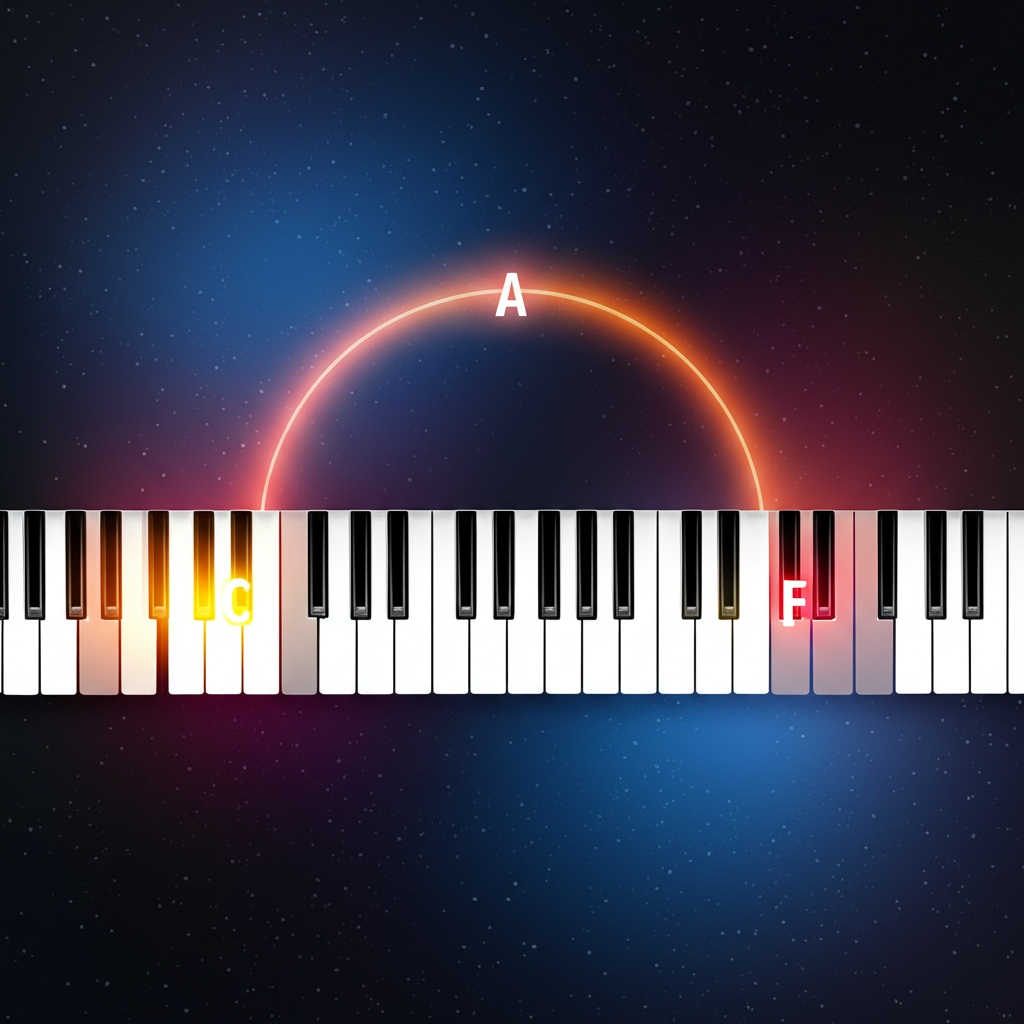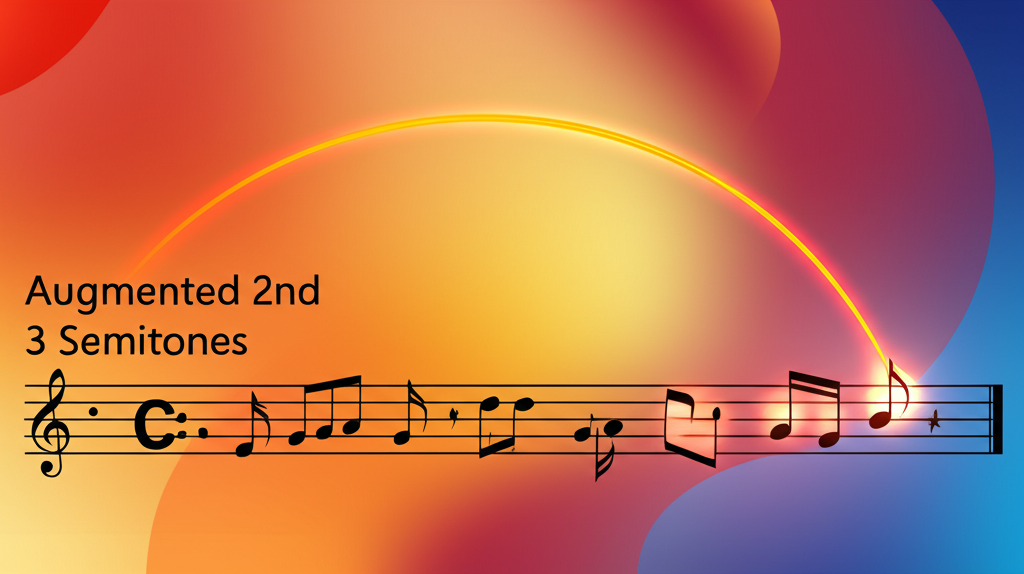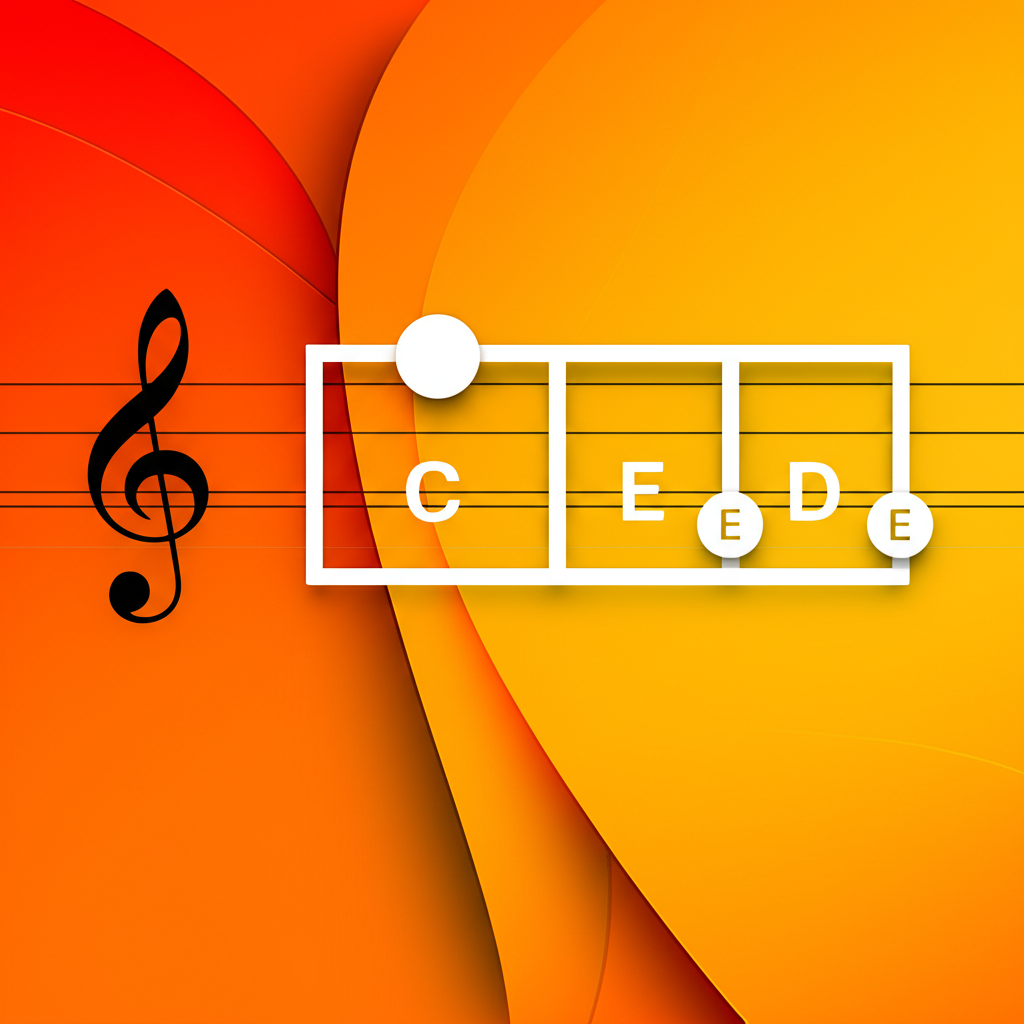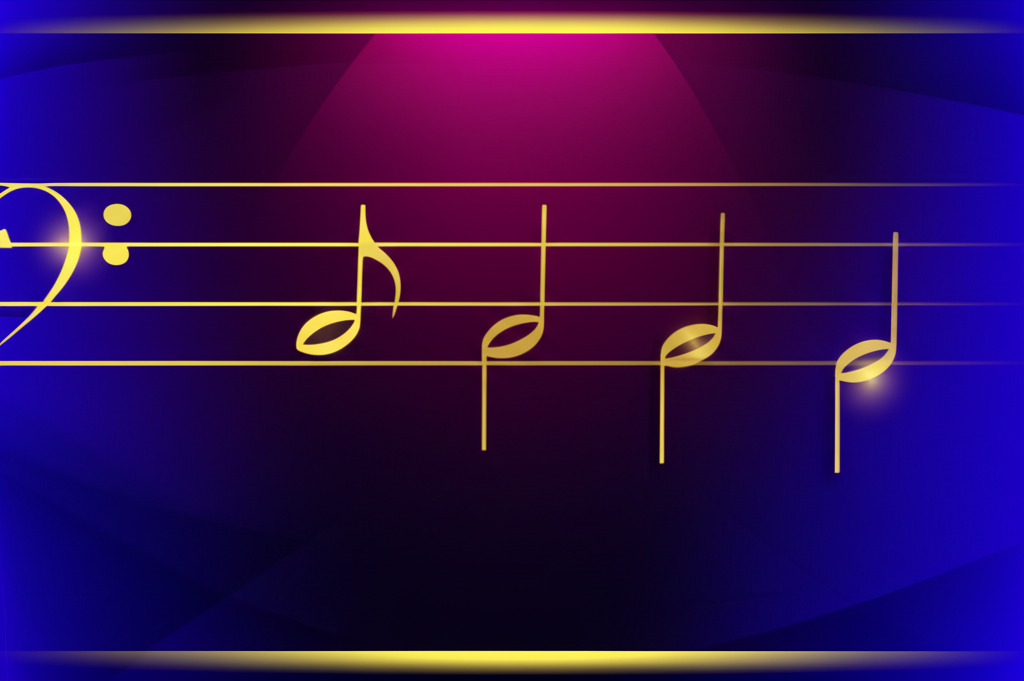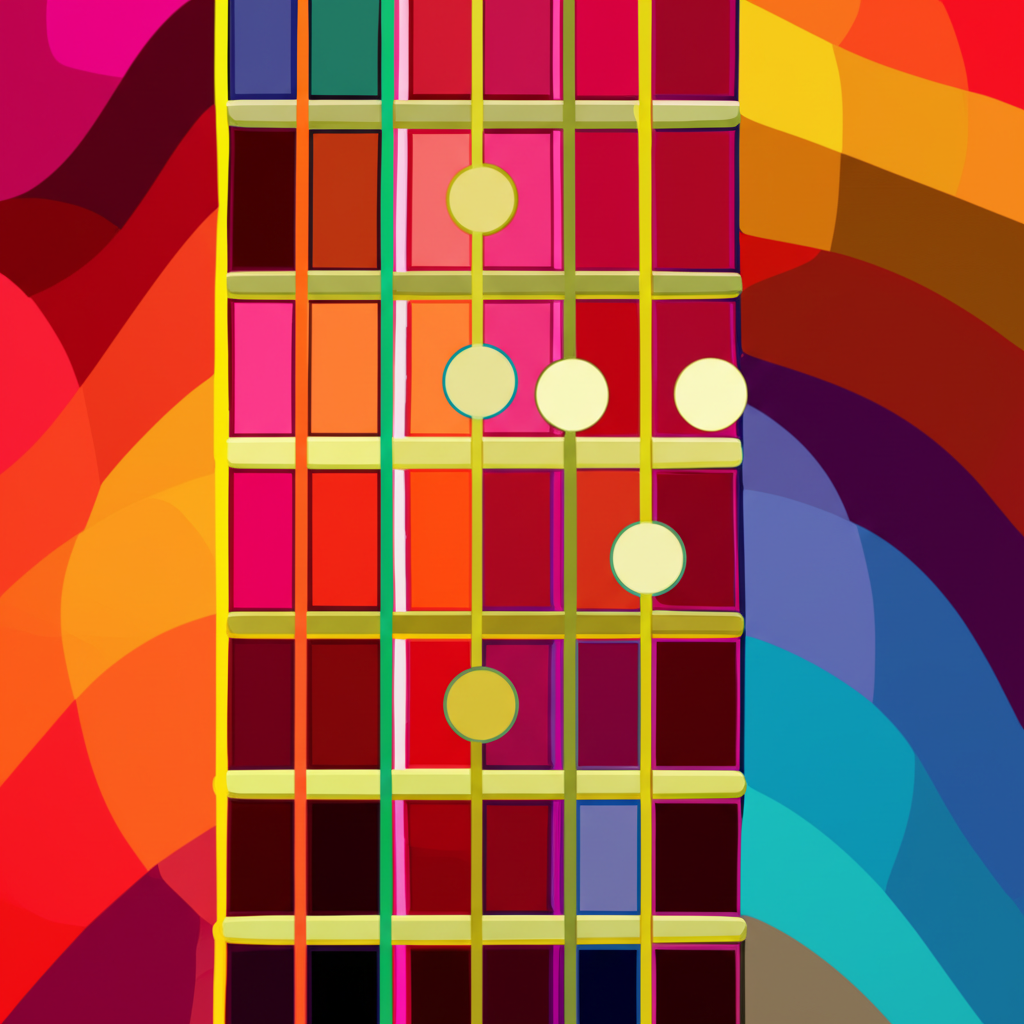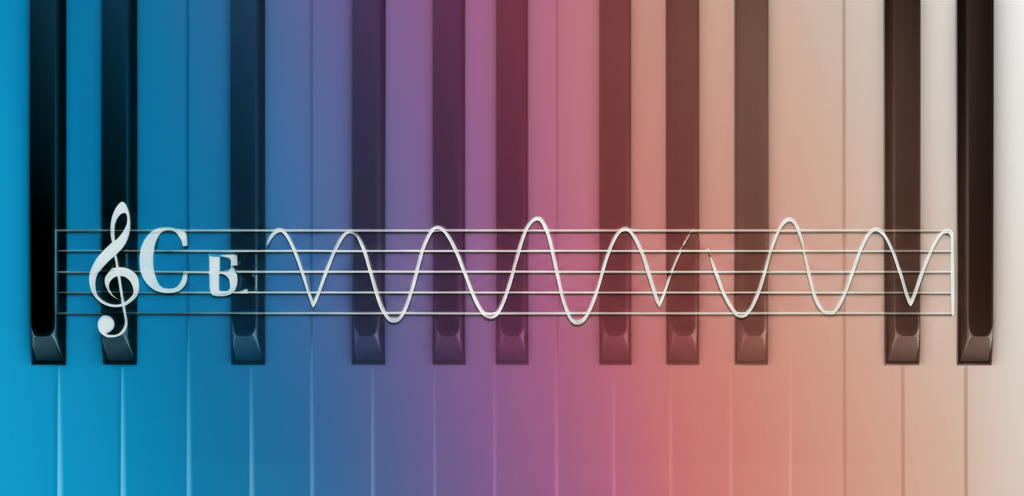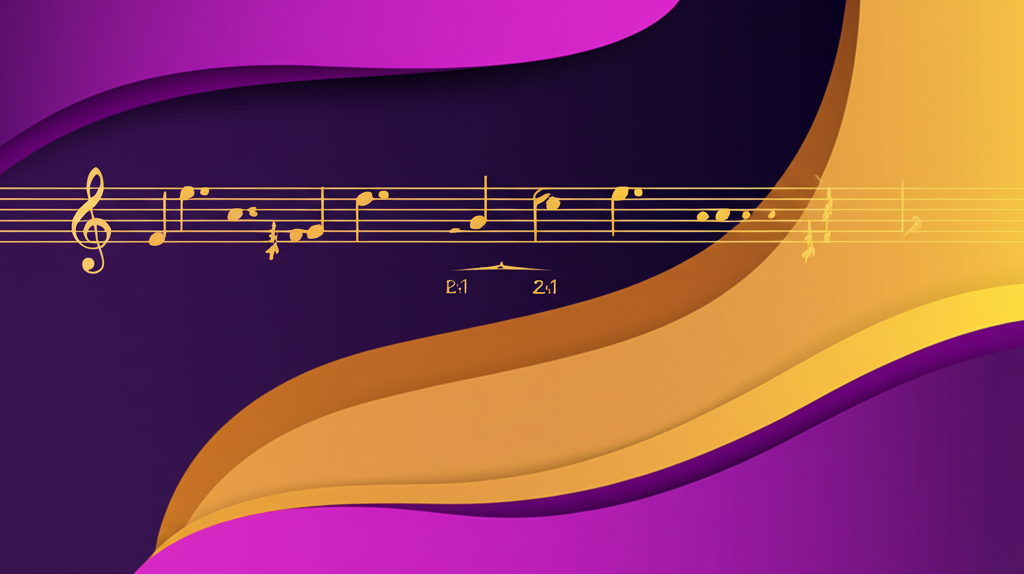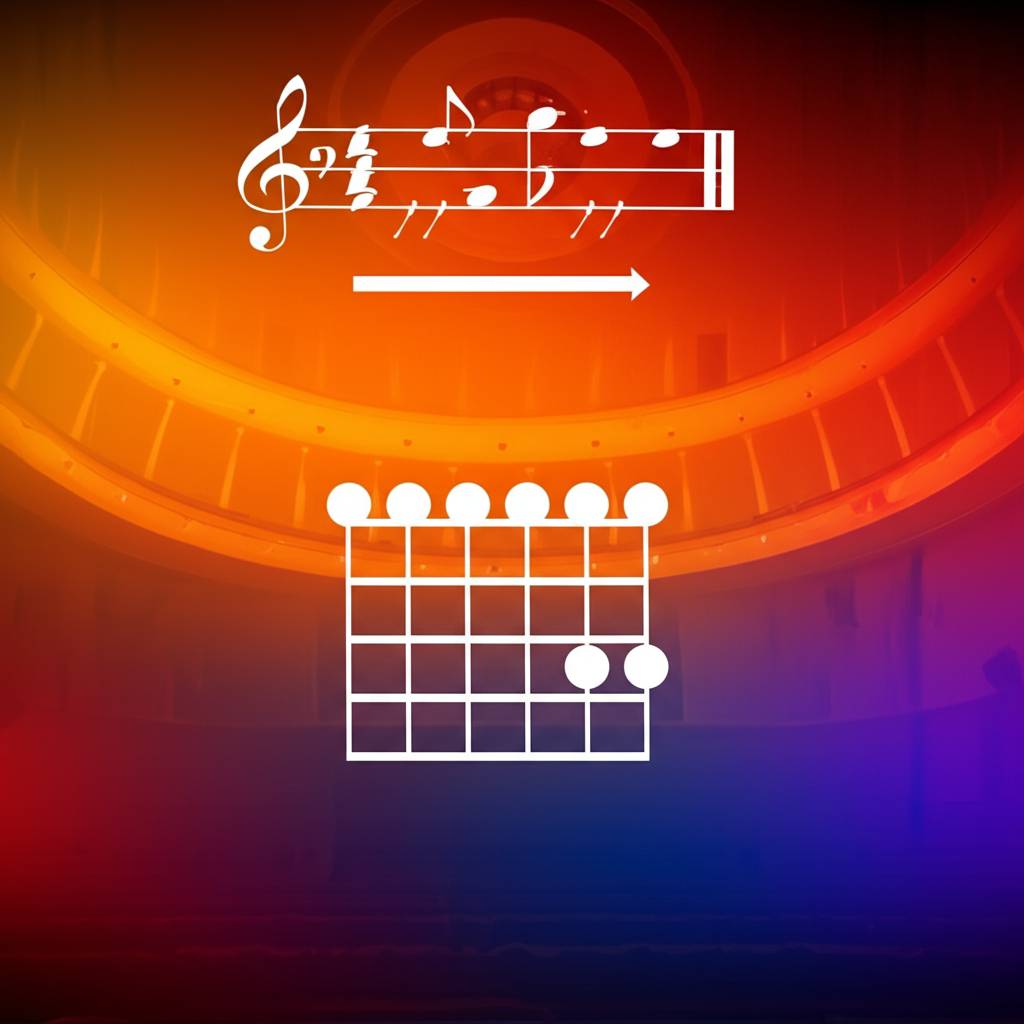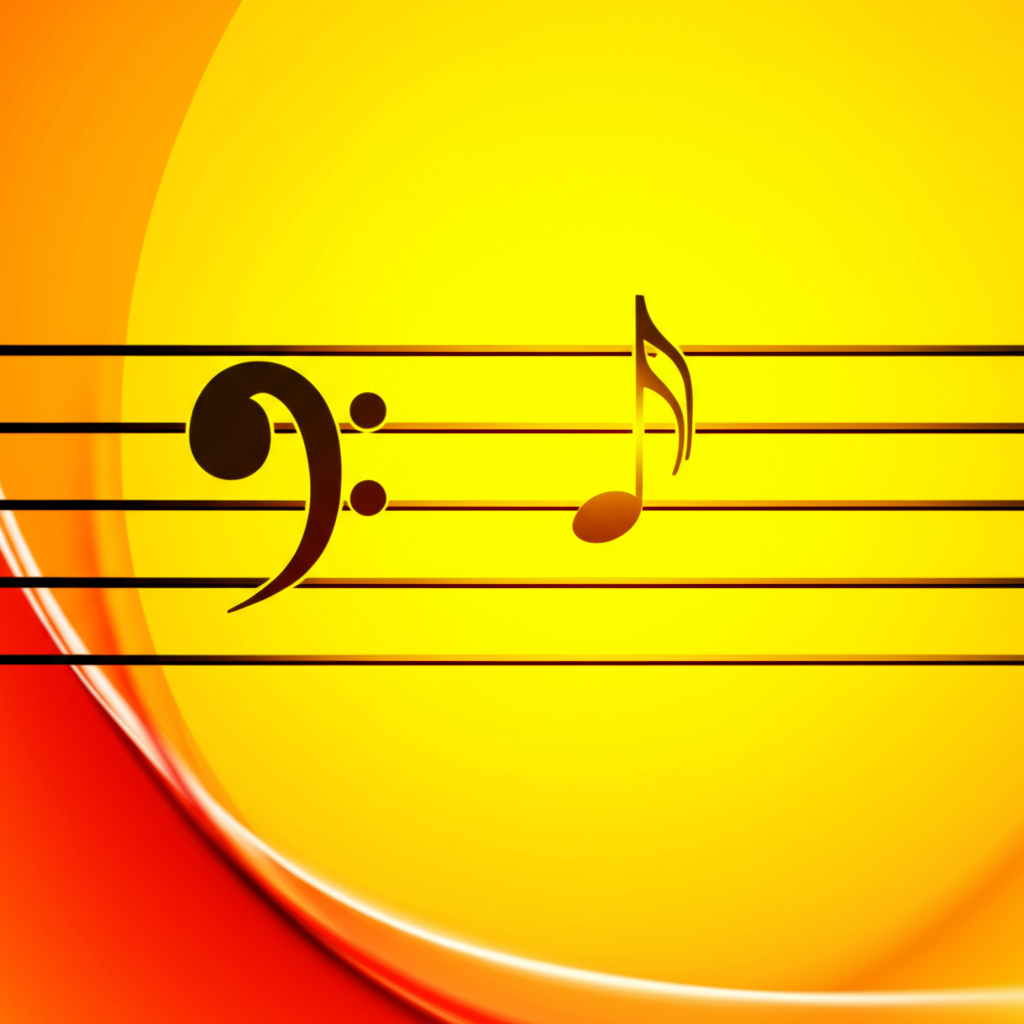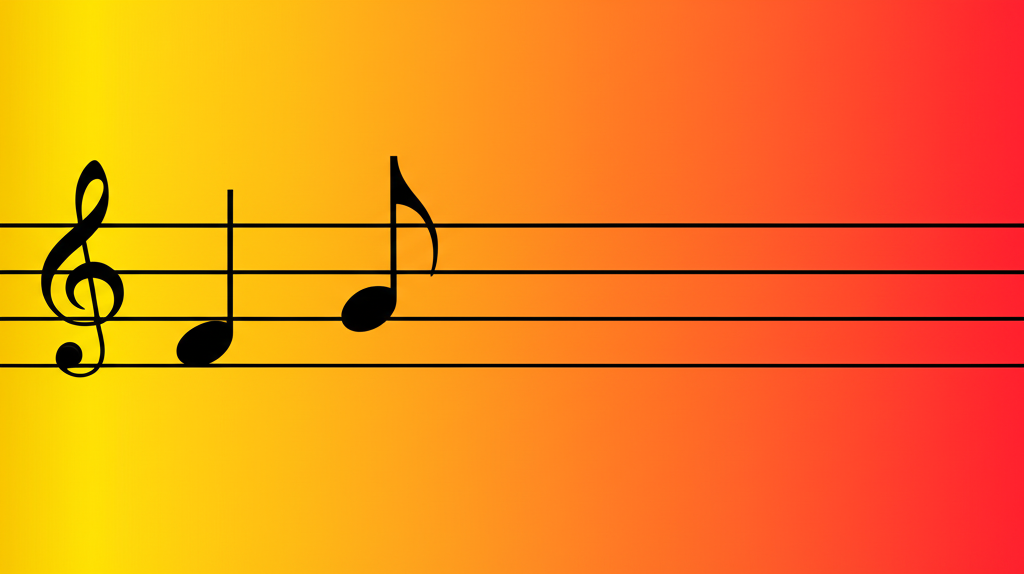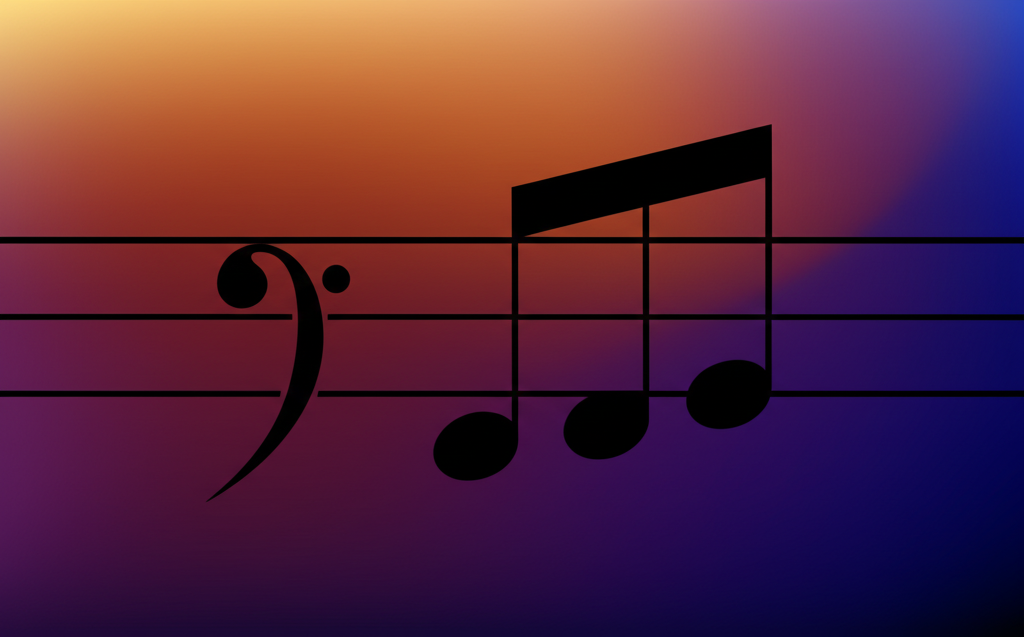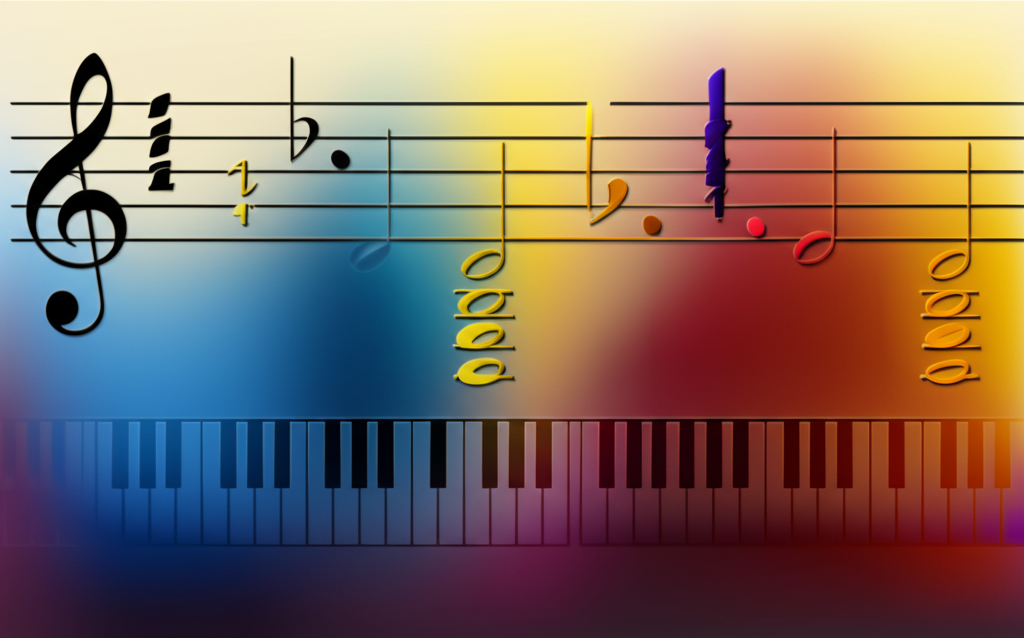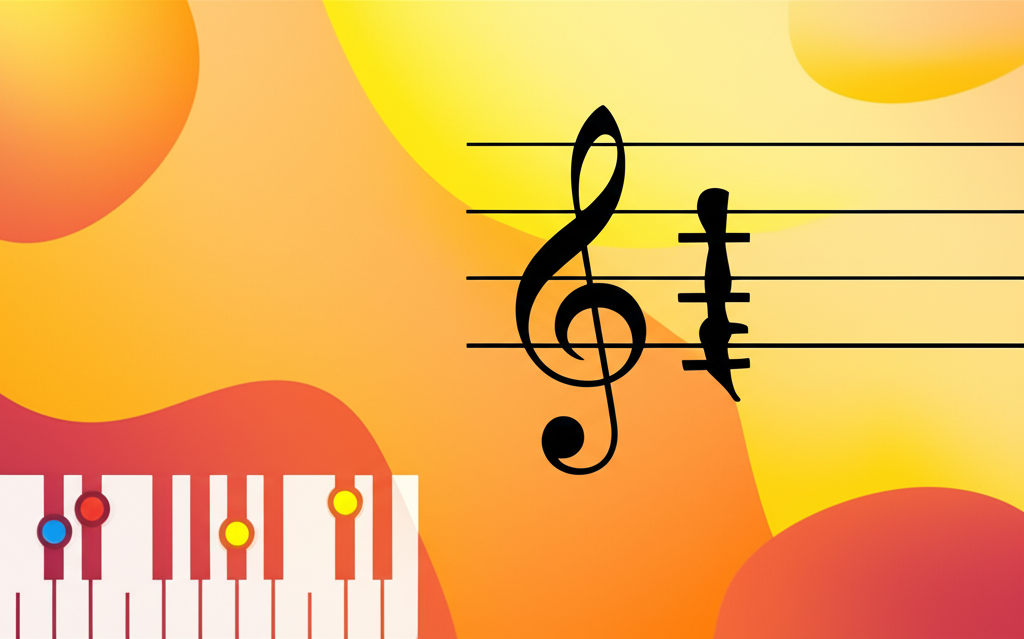
Major Scales: The Melodic Foundation of Western Music

b4n1
May 17, 2025, 4:27 p.m.
Major Scales: The Melodic Foundation of Western Music
Summary:
Major scales constitute one of the fundamental pillars of Western music, providing the basis for melody, harmony, and composition across centuries. This article explores in depth the structure of the major scale, its historical context, practical applications in various musical genres, and techniques for mastering it on different instruments. Through clear examples, practical exercises, and musical analysis, you'll discover how this sequence of seven notes has shaped the development of music from Bach to The Beatles.
Keywords:
major scale, diatonic scales, music theory, key signatures, intervals, tonality, harmony, melodic composition, Western music
Introduction:
At the heart of Western music theory lies a deceptively simple pattern of whole and half steps: the major scale. This fundamental sequence of notes has shaped the way we create, understand, and perceive music for centuries. From children learning their first melodies to composers crafting complex symphonies, the major scale provides the tonal framework that much of our musical world is built upon.
But what makes the major scale so special and ubiquitous? Its mathematically balanced structure creates a natural sense of tonal center and resolution, while its seven notes provide enough variety to build complex melodies and rich harmonic progressions. As a result, the major scale has become the benchmark from which we understand much of Western musical theory.
In this article, we will explore the major scale in depth: its structure, historical development, harmonic implications, and how it is used in different musical contexts. You will learn to play major scales on various instruments, understand how they relate to harmony, and discover techniques to incorporate them into your musical practice, whether as a performer, composer, or improviser.
Whether you are a beginner just starting your musical journey or an experienced musician looking to deepen your theoretical understanding, this exploration of the major scales will provide you with valuable tools to expand your musical vocabulary and appreciate more deeply the music you love.
Anatomy of the Major Scale
Structure of Whole and Half Steps
The major scale is defined by its specific pattern of whole (W) and half (H) steps, which creates its characteristic sound. This pattern is:
W - W - H - W - W - W - H
In other words, if we start from any note and follow this sequence, we will obtain the major scale of that note. For example, starting from C:
- C to D: a whole step
- D to E: a whole step
- E to F: a half step
- F to G: a whole step
- G to A: a whole step
- A to B: a whole step
- B to C: a half step
This structure can be visualized on the piano by observing that the half steps occur between E-F and B-C, where there are no black keys between the white keys:
The Seven Degrees of the Scale
Each note in the major scale occupies a position or "degree," numbered from 1 to 7. These degrees are not simply ordinal numbers; each has a specific musical function and a traditional name:
- 1st degree (I): Tonic - The "home" note that names the scale and provides resolution
- 2nd degree (II): Supertonic - Located a whole step above the tonic
- 3rd degree (III): Mediant - Defines the major (cheerful) or minor (sad) character of the scale
- 4th degree (IV): Subdominant - An important note for harmony, creating moderate movement
- 5th degree (V): Dominant - Creates strong tension that tends to resolve to the tonic
- 6th degree (VI): Submediant or Superdominant - Related to the relative minor
- 7th degree (VII): Leading Tone - Creates a strong tendency to resolve to the tonic
These functions are fundamental to understanding how melody and harmony operate in tonal music.
Triads Built on the Degrees of the Scale
By building three-note chords (triads) on each degree of the major scale, we obtain the following sequence of diatonic chords:
- I degree: Major Chord (in C major: C-E-G)
- II degree: Minor Chord (in C major: D-F-A)
- III degree: Minor Chord (in C major: E-G-B)
- IV degree: Major Chord (in C major: F-A-C)
- V degree: Major Chord (in C major: G-B-D)
- VI degree: Minor Chord (in C major: A-C-E)
- VII degree: Diminished Chord (in C major: B-D-F)
This pattern (major-minor-minor-major-major-minor-diminished) is consistent in all major keys and forms the basis of harmonic progression in tonal music.
The 15 Major Scales
Although theoretically we could build a major scale starting from any note, in traditional musical practice, 15 different major scales are used (one for each practical key).
Major Scales with Sharps
The following scales incorporate sharps (#) in their key signature, following the order of the circle of fifths:
- C major: No sharps or flats
- G major: F#
- D major: F#, C#
- A major: F#, C#, G#
- E major: F#, C#, G#, D#
- B major: F#, C#, G#, D#, A#
- F# major: F#, C#, G#, D#, A#, E#
- C# major: F#, C#, G#, D#, A#, E#, B#
Major Scales with Flats
The following scales incorporate flats (b) in their key signature, following the reverse order of the circle of fifths:
- F major: Bb
- Bb major: Bb, Eb
- Eb major: Bb, Eb, Ab
- Ab major: Bb, Eb, Ab, Db
- Db major: Bb, Eb, Ab, Db, Gb
- Gb major: Bb, Eb, Ab, Db, Gb, Cb
- Cb major: Bb, Eb, Ab, Db, Gb, Cb, Fb
Enharmonic Scales
Some scales are theoretically identical in sound but are written differently. For example:
- F# major and Gb major sound the same but are written differently
- C# major and Db major are enharmonic (same sound, different notation)
The choice between enharmonic scales generally depends on the musical context and on facilitating reading.
The Circle of Fifths
The circle of fifths is a visual tool that shows the relationship between the twelve musical keys. It organizes the keys according to the number of sharps or flats in their key signature, and also illustrates the fifth relationships between them.
If we move clockwise, each key has an ascending perfect fifth (or a descending fourth) in relation to the previous one, adding a sharp each time:
C → G → D → A → E → B → F# → C#
If we move counterclockwise, each key has a descending perfect fifth (or an ascending fourth) in relation to the previous one, adding a flat each time:
C → F → Bb → Eb → Ab → Db → Gb → Cb
The circle of fifths is an invaluable tool for:
- Remembering the key signatures for different keys
- Understanding the relationships between neighboring keys
- Planning modulations in compositions
- Visualizing common harmonic progressions (many progressions follow the movement of the circle)
History and Evolution of the Major Scale
Ancient Origins
The major scale as we know it today was not always the predominant scale in Western music. Its origins date back to the musical theories of ancient Greece, where Pythagoras (570-495 BC) established the mathematical foundations for musical intervals.
The Greeks developed several modes, including the Lydian and Ionian modes, the latter being the precursor to our modern major scale. However, in ancient Greece and for most of the Middle Ages, these modes coexisted with no one mode predominating over the others.
The Middle Ages and the Renaissance
During the Middle Ages, Western music was based on the system of ecclesiastical modes, partially inherited from the Greek modes. The Ionian mode (equivalent to our major scale) was just one of the eight modes used in Gregorian chant and other musical forms of the time.
In the Renaissance, theorists like Gioseffo Zarlino (1517-1590) began to recognize the special importance of what we now call the major and minor scales. Zarlino was one of the first to describe these systems in terms of major and minor triads, laying the groundwork for the development of functional tonality.
The Baroque Period and the Consolidation of Tonality
It was during the Baroque period (1600-1750) that the major scale became consolidated as the basis of the tonal system. Composers like Johann Sebastian Bach exhaustively explored the possibilities of the major-minor tonality, as demonstrated in his groundbreaking work "The Well-Tempered Clavier," which includes preludes and fugues in all major and minor keys.
The development of the equal temperament system also significantly contributed to the predominance of the major scale, as it allowed works to be played in any key while maintaining the same intervallic relationships.
The Classical and Romantic Eras
During the Classical (1750-1820) and Romantic (1820-1900) periods, the major scale became the standard language of musical composition. Composers like Mozart, Beethoven, and Brahms built monumental musical structures based on the tonal relationships derived from the major scale.
The sonata, a musical form that dominated these periods, was based on the contrast and eventual reconciliation of different tonal areas, all related to a central major (or minor) tonality.
20th and 21st Centuries
Although the 20th century saw the emergence of musical systems that challenged traditional tonality (such as twelve-tone technique, atonality, and various forms of experimental music), the major scale never lost its importance. In popular music, jazz, rock, pop, and many other genres, the major scale remains an essential foundation.
Today, even composers working with non-traditional musical languages often use the major scale as a point of reference or contrast, demonstrating the continued relevance of this basic musical structure.
The Major Scale on Different Instruments
Piano and Keyboards
On the piano, major scales are played by combining white and black keys according to the key. The visual pattern varies for each scale, but the fingering patterns follow consistent principles:
C Major Scale (no accidentals):
Right hand: 1-2-3-1-2-3-4-5 (where 1=thumb, 5=pinky)
Left hand: 5-4-3-2-1-3-2-1
For other scales, the fingering is adapted to allow for a smooth thumb under the other fingers (thumb pass) or fingers over the thumb.
Guitar
On the guitar, major scales can be played in multiple positions along the neck. One of the fundamental ways to visualize major scales is the CAGED system, which uses the shapes of the chords C, A, G, E, and D as the basis for scale positions.
Here is an example of the basic position for the C major scale on guitar (the numbers indicate the frets):
e |---0-1-3---| B |---1-3-----| G |---0-2-----| D |---2-3-5---| A |---3-5-----| E |---3-5-----|
This "box" can be moved along the neck and combined with other positions to play the scale across the instrument's range.
Wind Instruments
On wind instruments like the flute, clarinet, or saxophone, major scales are played using specific combinations of fingerings (opening and closing of keys or holes).
Each instrument has its own fingerings, but generally, wind instruments require a deep knowledge of alternative fingerings for certain notes, especially in scales with many accidentals.
The systematic practice of scales is particularly important for these instruments, as it develops not only technique but also sound quality and pitch accuracy.
String Instruments
On the violin, viola, cello, and double bass, major scales involve careful coordination between the fingers of the left hand (which press the strings) and the bow.
The fingering patterns vary depending on the key, and involve decisions about which string to use for each note and which fingers to employ. Shifts (moving the hand along the fingerboard) are essential for scales that span more than one octave.
For these instruments, scale practice is fundamental to developing intonation, as there are no frets to mark the exact positions of the notes.
Musical Applications of the Major Scale
Melody
The major scale provides the melodic material for countless compositions in various genres. Melodies can:
- Move by step (adjacent notes of the scale)
- Leap between notes of the scale (intervallic movement)
- Pivot around certain "pivot" notes (often the tonic, dominant, or mediant)
- Move between different octaves while maintaining the scale structure
Melodies based on the major scale tend to sound complete and satisfying when they end on the tonic, reinforcing the sense of resolution.
Example: Melody in C Major
Harmony
The major scale is the foundation of tonal harmony, providing the seven diatonic chords (built from each degree of the scale) that form the basis of traditional chord progressions:
I - ii - iii - IV - V - vi - vii°
Certain harmonic progressions have become especially common and effective:
- I-IV-V-I: The most basic progression, used in countless popular and folk songs
- I-vi-IV-V: The basis of many songs from the 50s and 60s
- ii-V-I: The fundamental progression in jazz
- I-V-vi-IV: A very common progression in contemporary pop music
Example: I-IV-V-I Progression in C Major
Composition
In composition, the major scale provides a structural framework that can:
- Establish a clear tonal center (the main key of the piece)
- Create tension through modulations to other keys
- Provide material for thematic development
- Serve as a basis for counterpoint and other compositional techniques
Classical musical forms like the sonata are built on the principle of establishing a tonality, exploring other tonal areas, and finally returning to the main tonality, all within the context of the major scale.
Improvisation
For improvisation, the major scale is an essential starting point:
- In jazz, improvisers use the major scale and its derived modes to navigate harmonic progressions
- In rock and blues, solos often combine the major scale with the major pentatonic scale
- In folk and traditional music, ornamentations and improvisations are often based on the major scale of the key
Mastering the major scale in all keys is a crucial step in developing fluency in improvisation in any style.
Modes of the Major Scale
Each major scale generates seven modes, starting from each of its degrees. These modes maintain the same notes as the original major scale, but by changing the starting note (and therefore the tonal center), they create distinctive sonorities:
- Ionian (I degree): Identical to the major scale (C to C on white keys)
- Dorian (II degree): Minor with a major sixth (D to D on white keys)
- Phrygian (III degree): Minor with a minor second (E to E on white keys)
- Lydian (IV degree): Major with an augmented fourth (F to F on white keys)
- Mixolydian (V degree): Major with a minor seventh (G to G on white keys)
- Aeolian (VI degree): Natural minor scale (A to A on white keys)
- Locrian (VII degree): Diminished, with a minor second and diminished fifth (B to B on white keys)
These modes have had different levels of importance throughout musical history and across different genres:
- The Mixolydian mode is common in rock and folk music
- The Dorian mode is frequent in jazz and some folk music
- The Lydian mode is favored by film score composers for its "floating" quality
- The Aeolian mode (natural minor scale) forms the basis of much music in the minor mode
Although the modes share the same notes as the original major scale, each has its own tonal "coloration" due to the different relationship of its notes to the new tonal center.
Example: Modes of C Major
Practical Exercises
Exercise 1: Major Scales in the Circle of Fifths
Practice the major scales following the circle of fifths, both clockwise and counterclockwise:
- Start with C major
- Move to G major (add F#)
- Continue to D major (add C#)
- Follow the pattern until the circle is complete
- Repeat in the opposite direction: C, F (add Bb), Bb (add Eb), etc.
This exercise will help you become familiar with all the keys and their key signatures, and understand the relationship between neighboring keys.
Exercise 2: Scale Technique in Thirds
Playing scales in thirds develops technique and harmonic understanding simultaneously:
Example: C Major in Thirds
Practice this pattern in all keys, ascending and descending. For an additional challenge, try diatonic descending thirds and then patterns in fourths and sixths.
Exercise 3: Building Diatonic Chords
Practice building and playing the seven diatonic chords in each major key:
- Identify the notes of the major scale
- Build a triad from each degree (1-3-5 of each position)
- Play each chord in succession: I - ii - iii - IV - V - vi - vii°
- Experiment with different inversions and voicings
This exercise connects your understanding of scales with practical harmony.
Exercise 4: Guided Improvisation
Develop your creativity by improvising over a simple progression using the major scale:
- Establish a basic progression like I-IV-V-I in any major key
- Improvise melodies using only the notes of the corresponding major scale
- Initially limit yourself to simple rhythms and stepwise motion
- Gradually incorporate larger interval leaps and more complex rhythms
- Try to emphasize the chord tones on each change
This exercise develops your ear, technique, and understanding of the relationship between melody and harmony.
The Major Scale in Different Genres
Classical Music
In Western classical music, the major scale is fundamental to:
- The development of the sonata form, with its play of contrasting tonalities
- The harmonic structures of symphonies, concertos, and chamber music
- The modulation system that allows movement between different tonal centers
Composers like Mozart and Haydn perfected the use of major tonality to create elegant and balanced musical structures.
Jazz
In jazz, the major scale serves as:
- A basis for understanding chord extensions (7ths, 9ths, 11ths, 13ths)
- A source of the modes used for improvising over harmonic progressions
- A starting point for altered and substitute scales used in more advanced contexts
Classic jazz standards often begin in a major key before exploring more complex harmonic territories.
Rock and Pop
In popular music, the major scale provides:
- Predictable and satisfying harmonic progressions that form the basis of many songs
- Vocal melodies that primarily move within the major scale of the key
- Instrumental solos based on the major scale or its variants (like the major pentatonic)
Bands from The Beatles to Coldplay have built enduring hits using harmonic progressions derived from the major scale.
Folk and Traditional Music
In folk music traditions around the world:
- Melodies based on the major scale (or its modes) are common in traditional European songs
- Acoustic instruments like guitar, violin, and flute often play in major keys that feel natural on these instruments
- Songs often use a limited harmonic vocabulary centered on the primary chords of the major key (I, IV, V)
Beyond the Major Scale
While the major scale is fundamental, there are many other scales and variations that expand the musical vocabulary:
Minor Scale and its Variants
The natural minor scale (Aeolian mode) and its variants offer darker or tenser colorations:
- Natural minor scale: 1-2-♭3-4-5-♭6-♭7-8
- Harmonic minor scale: 1-2-♭3-4-5-♭6-7-8 (raised seventh)
- Melodic minor scale: 1-2-♭3-4-5-6-7-8 ascending, same as natural descending
Pentatonic and Blues Scales
The pentatonic scales reduce the major or minor scale to five notes, creating sonorities that work well in many musical contexts:
- Major pentatonic: 1-2-3-5-6 (like C-D-E-G-A)
- Minor pentatonic: 1-♭3-4-5-♭7 (like A-C-D-E-G)
- Blues scale: minor pentatonic with an added "blue note" (♭5)
Exotic and Synthetic Scales
Beyond traditional Western scales, there is a world of possibilities:
- Scales from non-Western music: Arabic maqam, Indian ragas, Japanese scales
- Synthetic scales: whole tone scale, diminished scale (octatonic), augmented scale
- Ecclesiastical modes: additional modes like Dorian ♯4 or Phrygian major
Exploring these scales can greatly enrich your expressive palette as a musician, composer, or improviser.
Conclusion:
The major scale, with its characteristic pattern of whole and half steps, represents one of the most fundamental foundations of Western music. Its development over the centuries has shaped our understanding of melody, harmony, and musical structure, providing the framework upon which countless masterpieces have been built across all genres.
Despite its apparent simplicity—seven notes arranged in a specific pattern—the major scale contains a surprising richness and depth. From it derives not only a rich harmonic palette of diatonic chords but also a complete spectrum of modes with their own expressive qualities. Its mathematically balanced structure creates a natural sense of tonal center and resolution that continues to resonate with listeners across cultures and eras.
For the aspiring musician, mastering the major scales in all keys is not simply a technical exercise, but a gateway to a deeper understanding of musical language. For the composer or improviser, they represent an essential tool for creative expression. And for the listener, understanding the structure and function of the major scale can transform the listening experience, revealing the scaffolding upon which the music we love is built.
In a musical world that continually explores new sonic territories and challenges established conventions, the major scale remains an indispensable reference point—a familiar beacon in the vast ocean of musical possibilities. As such, it deserves not only our study but our continued appreciation for its elegant simplicity and inexhaustible expressive potential.
References:
-
Kostka, S., & Payne, D. (2013). "Tonal Harmony: With an Introduction to Twentieth-Century Music". McGraw-Hill Education.
-
Levine, Mark. (1995). "The Jazz Theory Book". Sher Music Co.
-
Persichetti, Vincent. (1961). "Twentieth-Century Harmony: Creative Aspects and Practice". W. W. Norton & Company.
-
Tagg, Philip. (2014). "Everyday Tonality II: Towards a Tonal Theory of What Most People Hear". The Mass Media Music Scholars' Press.






